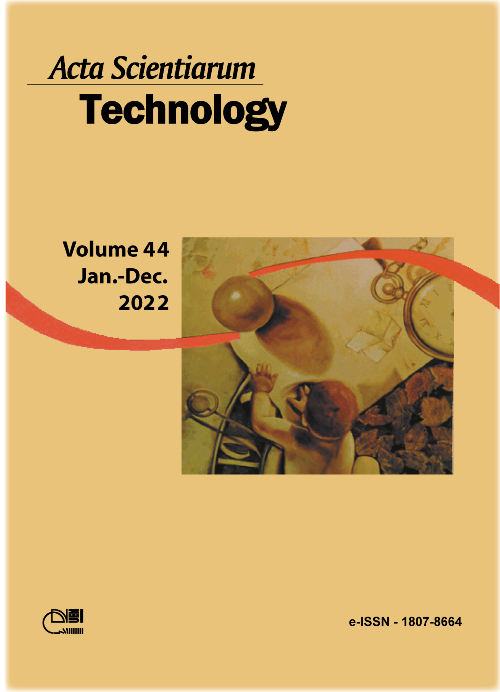Analysis of fat mass value, clinical and metabolic data and interleukin-6 in HIV-positive males using regression analyses and artificial neural network
DOI:
https://doi.org/10.4025/actascitechnol.v44i1.57634Keywords:
HIV; fat mass; bivariate linear regression analyses; artificial neural network (ANN).Abstract
The purpose of this study is to analyses the relationship between fat mass and inflammation marker, interleukin-6, clinical and metabolic data in 71 human immunodeficiency virus (HIV)-positive male patients using bivariate linear regression analyses and artificial neural network. The data used consisted of measurements collected from HIV male subjects aged 26 to 69 years, with body mass index (BMI) values between 15.47 and 36.98 kg m-2 and the fat mass values between 1.00 kg and 16.70 kg. The bivariate linear regression analyses showed that weight, waist-hip ratio, BMI, triglycerides, high-density lipoprotein and HIV viral load value were significant risk factors associated with the body fat mass in male HIV patients. Furthermore, an in-depth non-linear analysis has been performed using artificial neural network (ANN) to predict fat mass by using the significant predictors as input. ANN model with four hidden neurons obtained the highest mean predictive accuracy percentage of 85.26%. The finding of this study is able to help with the evaluation of the fat mass in the male HIV patients that consequently reflects the patients metabolic-related irregularity and immune response. It is also believed that the outcome from the analysis can help future HIV-related study on the prediction of body fat mass in male HIV patients especially in settings where dual energy X-ray absorptiometry assessments, the standard measurement method for fat mass are not available or affordable
Downloads
Downloads
Published
How to Cite
Issue
Section
License
DECLARATION OF ORIGINALITY AND COPYRIGHTS
I Declare that current article is original and has not been submitted for publication, in part or in whole, to any other national or international journal.
The copyrights belong exclusively to the authors. Published content is licensed under Creative Commons Attribution 4.0 (CC BY 4.0) guidelines, which allows sharing (copy and distribution of the material in any medium or format) and adaptation (remix, transform, and build upon the material) for any purpose, even commercially, under the terms of attribution.
Read this link for further information on how to use CC BY 4.0 properly.











8.png)




